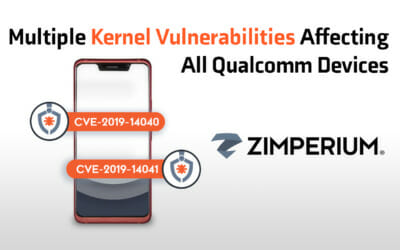In today’s fast-paced digital landscape, low-code development platforms have emerged as a game-changer, enabling organizations to build mobile applications swiftly and efficiently. By minimizing the need for extensive hand coding, these platforms empower both experienced developers and those with limited coding expertise to bring innovative ideas to life. However, beneath the surface of rapid development lies a realm of hidden security costs that can significantly impact the overall integrity and success of your mobile applications. In this blog, we delve into the top three concealed security expenses associated with low-code mobile app development and explore strategies to mitigate them.
1. Inadequate Security Controls
The Challenge: Low-code platforms are designed to simplify the development process, often abstracting complex coding tasks. While this accelerates app creation, it can also lead to insufficiently robust security measures. Many low-code platforms may not offer comprehensive built-in security features, leaving gaps that malicious actors can exploit.
Hidden Costs:
- Vulnerability Exploitation: Without strong security controls, applications become susceptible to data breaches, unauthorized access, and other cyber threats. Addressing these breaches can be costly, not just financially but also in terms of reputation.
- Patch Management: Continuously updating and patching vulnerabilities in a low-code environment requires dedicated resources, adding to the overall security budget.
Mitigation Strategies:
- Integrate Third-Party Security Tools: Enhance the platform’s security by integrating advanced security solutions that offer features like encryption, authentication, and real-time threat detection.
- Regular Security Audits: Conduct periodic security assessments to identify and rectify vulnerabilities proactively.
2. Compliance Gaps
The Challenge: Regulatory compliance is a critical aspect of mobile app development, especially for industries handling sensitive data such as finance, healthcare, and e-commerce. Low-code platforms may not inherently support all the compliance requirements out-of-the-box, leading to potential gaps.
Hidden Costs:
- Regulatory Fines: Non-compliance with standards like GDPR, HIPAA, or CCPA can result in hefty fines and legal repercussions.
- Implementation Expenses: Achieving compliance often necessitates additional layers of security, documentation, and processes, which can escalate development costs.
Mitigation Strategies:
- Choose Compliance-Friendly Platforms: Opt for low-code platforms that prioritize compliance and offer built-in features aligned with industry standards.
- Continuous Monitoring: Implement systems to continuously monitor compliance status, ensuring that the application adheres to evolving regulations.
3. Incident Response Expenses
The Challenge: Even with robust security measures, no system is entirely immune to breaches. When security incidents occur, the costs associated with responding and recovering can be substantial, especially if initial security investments were inadequate.
Hidden Costs:
- Forensic Analysis: Determining the root cause of a breach requires specialized expertise and tools, driving up incident response costs.
- Remediation Efforts: Fixing vulnerabilities, restoring data, and enhancing security post-incident demand significant time and financial resources.
- Downtime and Loss of Trust: Extended downtime can lead to loss of business and damage to the organization’s reputation, which can be costly in the long run.
Mitigation Strategies:
- Develop a Robust Incident Response Plan: Establish a clear, actionable plan outlining the steps to take in the event of a security breach.
- Invest in Training: Equip your team with the necessary skills and knowledge to handle security incidents effectively and efficiently.
Low-code development platforms undoubtedly offer remarkable advantages in accelerating mobile app development and reducing engineering costs. However, overlooking the hidden security costs associated with these platforms can lead to significant financial and reputational repercussions. By recognizing and addressing the challenges of inadequate security controls, compliance gaps, and incident response expenses, organizations can better safeguard their mobile applications against emerging threats. Investing in comprehensive security measures from the outset not only protects your applications but also ensures sustainable growth and trust in an increasingly competitive market.
For a deeper dive into the nuances of low-code development and mobile app security, explore Zimperium’s detailed report.



